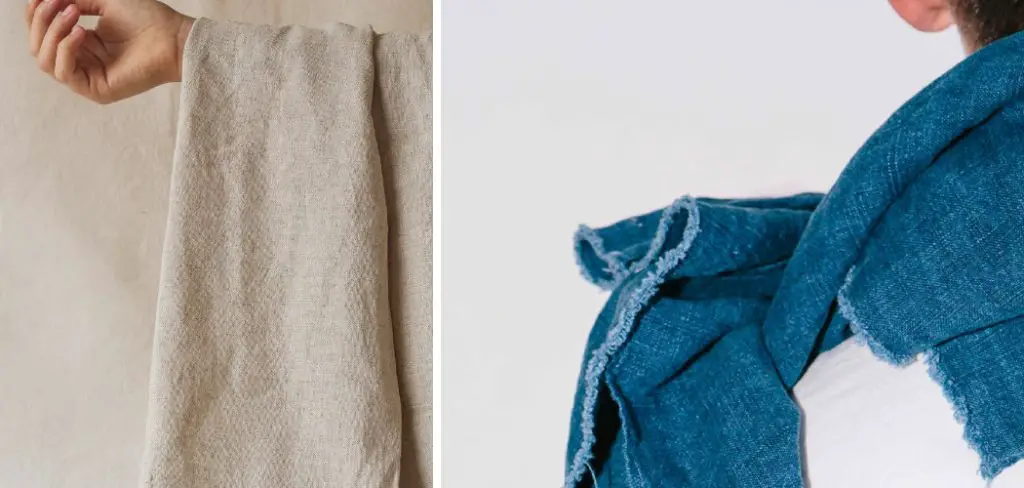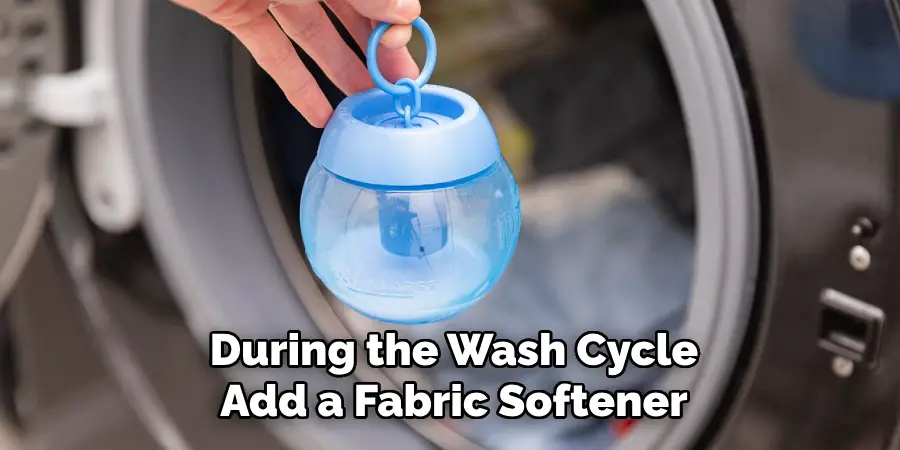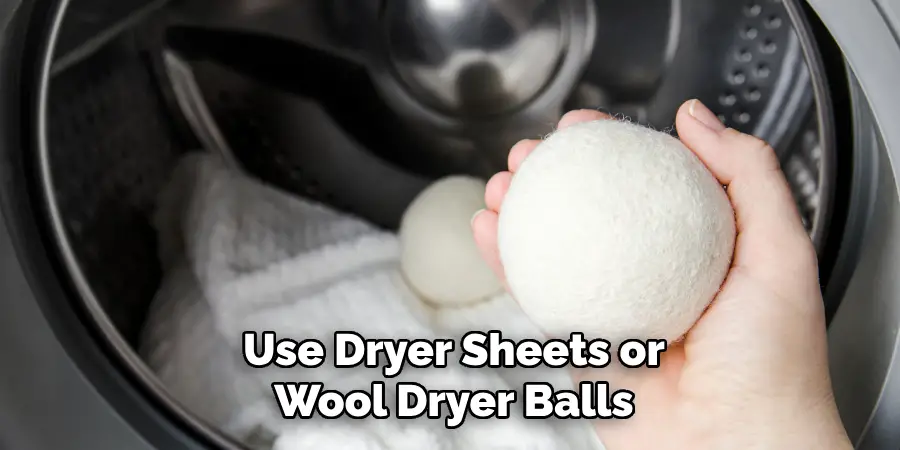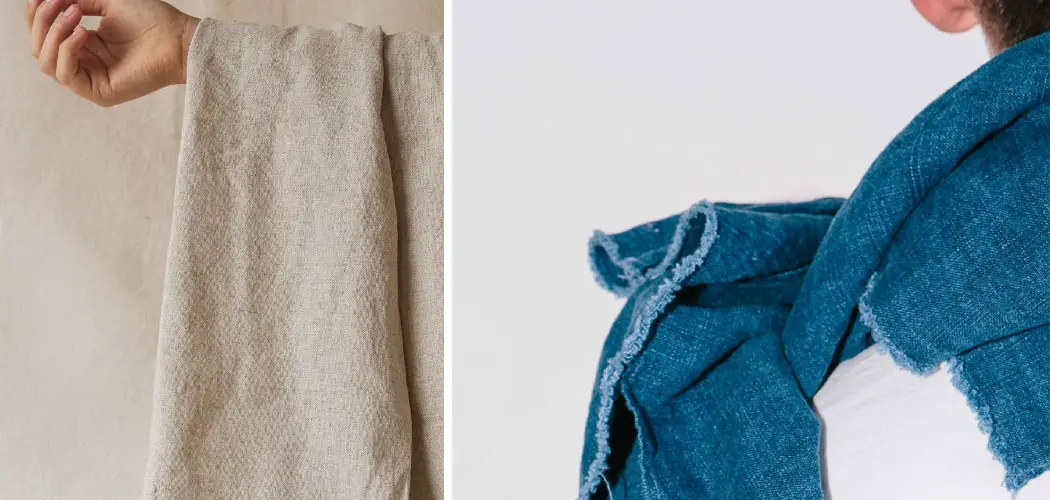Are you tired of wearing your favorite linen clothes only to have them be itchy and uncomfortable? Linen is a popular fabric known for its durability and breathability, but it can also be quite rough on the skin. If you’re wondering how to make linen less itchy, we’ve got you covered with these simple tips and tricks.

Linen is celebrated for its durability, breathability, and natural beauty, making it a popular choice for clothing and home textiles. However, its rough texture can sometimes lead to discomfort and itchiness, especially for those with sensitive skin. Thankfully, there are several effective methods to soften linen and reduce its itchiness, allowing you to enjoy its many benefits without any discomfort.
In this guide, we will explore various techniques and tips for making linen less itchy, ensuring that it remains a comfortable and stylish addition to your wardrobe and home.
What Will You Need?
To make linen less itchy, you will need a few items that are easily available at home or can be purchased inexpensively. These include:
- Mild detergent
- Fabric softener
- White vinegar
- Baking soda
- Dryer sheets or wool dryer balls
- Iron
Make sure to read the care instructions on your linen clothing or bedding before trying any of these methods, as some may require special care techniques.
10 Easy Steps on How to Make Linen Less Itchy
Step 1: Pre-Wash Your Linen
Before you start wearing or using your new linen items, give them a thorough pre-wash. Use a gentle cycle with cold or lukewarm water and a mild detergent. This initial wash will help remove any sizing or chemicals used during manufacturing that could contribute to itchiness.

Step 2: Use Fabric Softener
During the wash cycle, add a fabric softener to help break down the fibers and make the linen softer. Fabric softeners are designed to coat the fabric’s fibers, reducing friction and making the material feel smoother against your skin. If you prefer a natural alternative, you can use white vinegar instead. Simply add half a cup of white vinegar to the rinse cycle to achieve a similar softening effect.
Step 3: Add Baking Soda
Baking soda is another wonderful natural remedy for softening linen. Add half a cup of baking soda to the water during the wash cycle. Baking soda not only softens the fabric but also helps to neutralize any odors and remove any lingering residues that might contribute to itchiness. Be sure to dissolve the baking soda thoroughly in the water before adding your linen items.
Step 4: Use Dryer Sheets or Wool Dryer Balls
Use dryer sheets or wool dryer balls to further soften the fabric when drying your linen. Dryer sheets help to reduce static and add a layer of softness to the linen. Wool dryer balls, on the other hand, gently tumble against the fabric during the drying process, breaking down fibers and making them feel softer. Simply toss a couple of dryer sheets or wool dryer balls into the dryer with your linen items and set them to a low heat or air-dry setting for best results.
Step 5: Iron While Damp
Ironing your linen garments or bedding while they are still slightly damp can help soften the fibers. Set your iron to the appropriate temperature for linen and use steam if possible. Combining heat and moisture will help relax the fibers, making the fabric less stiff and more comfortable against your skin. Be sure to iron on the reverse side to prevent any potential damage or shine marks on the linen.
Step 6: Repeat Washing
Sometimes, one wash isn’t enough to fully soften your linen items. If your linen is still itchy after the first wash, repeat the washing process a few more times. Each wash will continue to break down the fibers, gradually making the fabric softer. Use a mild detergent, fabric softener, or white vinegar, and follow the same steps as before to enhance the softness of your linen.
Step 7: Avoid Overloading the Washing Machine
When washing linen, avoid overloading the washing machine. Overloading can prevent your linen items from getting properly cleaned and softened. Ensure there is enough space for the water and detergent to circulate freely around the items. This will help thoroughly clean and soften the fabric, reducing its itchiness.
Step 8: Use a Fabric Conditioner
Fabric conditioners are specifically formulated to soften and protect fibers, making them an excellent choice for reducing itchiness in linen. When using a fabric conditioner, add it to the final rinse cycle of your washing machine. The conditioner will penetrate the fabric, smoothing out the rough fibers and adding a silky feel. Some fabric conditioners also contain ingredients that help to reduce static, which can further contribute to the comfort of your linen items. If you’re looking for a natural alternative, you can try using a mixture of water and hair conditioner. Simply dilute one part of the hair conditioner with three parts of water and add it to the rinse cycle to achieve a similar effect.

Step 9: Air Dry
Air drying your linen items can be highly effective in maintaining their softness. While dryer sheets and wool dryer balls can help soften the fabric, air drying prevents the linen from being exposed to the potentially abrasive heat of the dryer. To air-dry your linen, simply hang them outdoors or lay them flat on a drying rack. The natural airflow will help to soften the fibers without causing any damage. If you choose to hang your linen items, try to do so in a shaded area to avoid prolonged exposure to direct sunlight, which can weaken the fibers over time.
Step 10: Regular Use
Finally, one of the easiest ways to soften your linen is by using it regularly. Frequent use will naturally break down and soften the fibers over time, making the fabric more comfortable against your skin. Whether you wear your linen clothes often or use your linen bedding daily, regular use will reduce the itchiness and enhance the overall softness of the material. Additionally, the natural oils from your skin can help to condition the linen, adding to its softness with each wear or use.
By following these ten simple steps, you can ensure that your linen items remain soft and comfortable, allowing you to enjoy the many benefits of this beautiful fabric without any discomfort.
5 Additional Tips and Tricks
1. Pre-Soak in Salt Water
Before using your linen items for the first time, consider giving them a pre-soak in a saltwater solution. Dissolve about 1/4 cup of salt in a bucket of warm water and let your linen soak overnight. The salt helps to relax the linen fibers, reducing stiffness and itchiness.

2. Rubbing with a Pumice Stone
Gently rubbing your linen with a pumice stone can help to soften the fibers. Be careful to do this lightly and evenly to avoid damaging the fabric. This technique works well for smaller items or areas that are particularly itchy.
3. Use a Linen-Specific Detergent
Opting for a detergent that is specifically formulated for linen can make a noticeable difference in softness. These detergents are designed to protect the integrity of the linen fibers while effectively cleaning and softening the fabric.
4. Applying a Fabric Soothing Spray
Fabric soothing sprays, which are available in most laundry aisles, can be lightly sprayed onto your linen items to add a layer of softness. These sprays often contain conditioning agents that help further soften the fabric without needing washing.
5. Avoiding Fabric Stiffeners
Steer clear of using fabric stiffeners or starch on your linen items. These products can make the linen fibers more rigid and itchy. Instead, stick to softening agents and natural remedies to keep your linen comfortable against your skin.
By incorporating these additional tips and tricks with the previous steps, you can effectively reduce the itchiness of your linen and enjoy its natural elegance and comfort.

5 Things You Should Avoid
- Using High Heat: Exposing your linen to high temperatures, either in the washing machine, dryer, or when ironing, can cause the fibers to become stiff and brittle. High heat can also damage linen’s natural textures, making it even more uncomfortable.
- Using Harsh Detergents: Harsh detergents, including those with strong chemicals or bleach, can strip away the natural softness of linen fibers. These substances can exacerbate the itchiness and degrade the fabric over time.
- Neglecting to Follow Care Instructions: Each type of linen may have specific care instructions that should be followed to maintain its softness and integrity. Be sure to read and follow these instructions carefully to avoid any damage or discomfort with your linen items.
- Using Low-Quality Linen Products: Low-quality linen often contains shorter, rougher fibers that are more prone to causing itchiness. Investing in high-quality linen items will feel softer against your skin and last longer and maintain its softness over time.
- Skipping the Washing Step: It may be tempting to skip washing your new linen items before using them, but this can contribute to their itchiness and discomfort. Washing helps to break down any stiffness or roughness in the fabric, making it easier on your skin.
By avoiding these common mistakes and following our tips and tricks for softening linen, you can ensure that your experience with
Conclusion
Combining proper care techniques with informed choices about products and practices can achieve softer and less itchy linen.
By following our outlined steps on how to make linen less itchy — from using fabric softeners and natural alternatives, to air drying, and regular use — you can significantly enhance the comfort of your linen items. Adding in extra tips, like pre-soaking in salt water or using a linen-specific detergent, further ensures that your linen remains gentle against your skin. Additionally, avoiding pitfalls such as high heat, harsh detergents, or low-quality linens will maintain the fabric’s natural elegance and extend its lifespan.
With these strategies in place, you can enjoy the luxurious feel of linen without any discomfort.
About
Angela is the chief editor of Indoorense. She began her career as an interior designer before applying her strategic and creative passion to lifestyle and home.
She has close to 15 years of experience in creative writing and online content strategy for housekeeping and cleaning,home decorations as well as other efforts.
She loves her job and has the privilege of working with an extraordinary team. She lives with her husband, two sons, and daughter in Petersburg. When she’s not busy working she spent time with her family.

